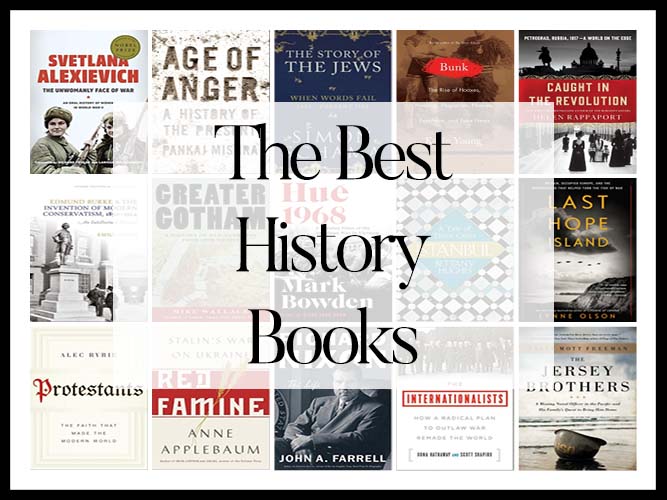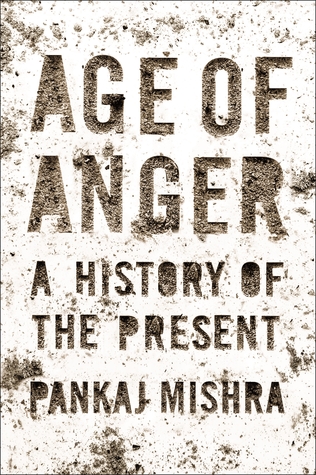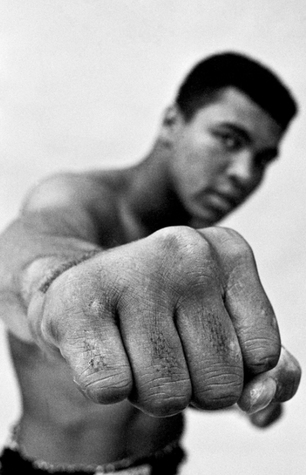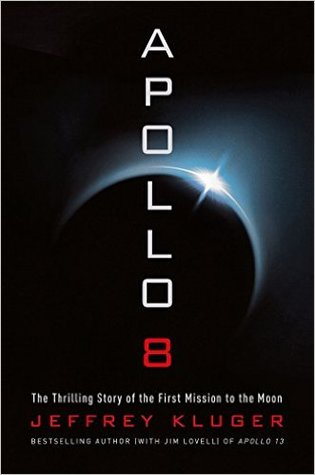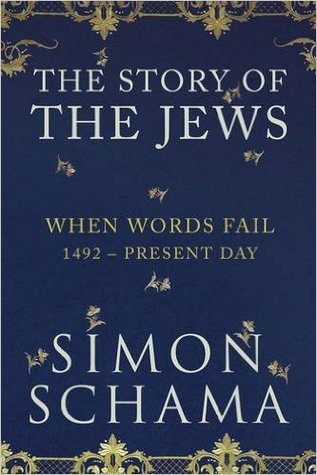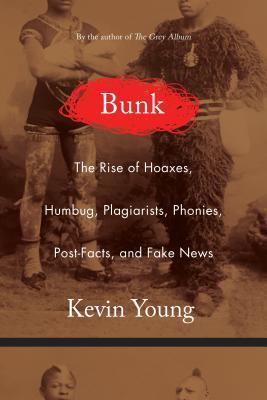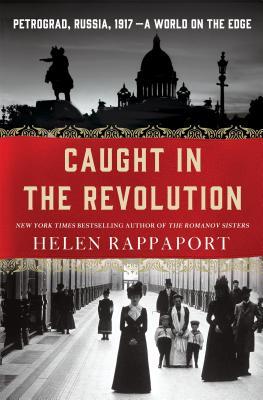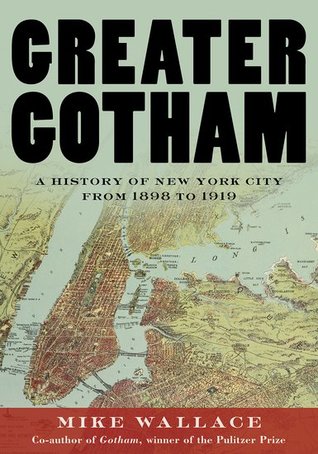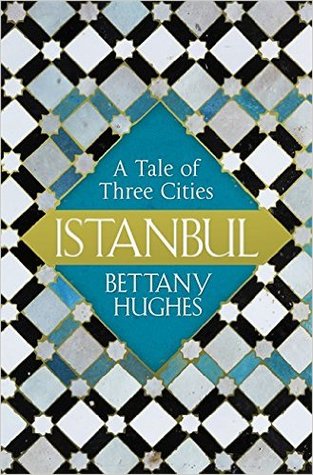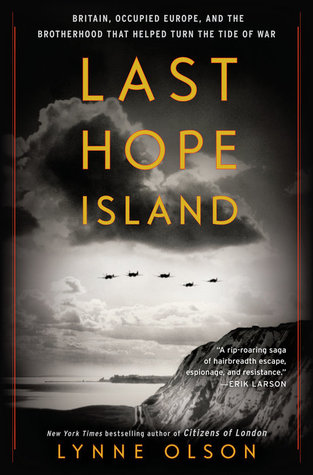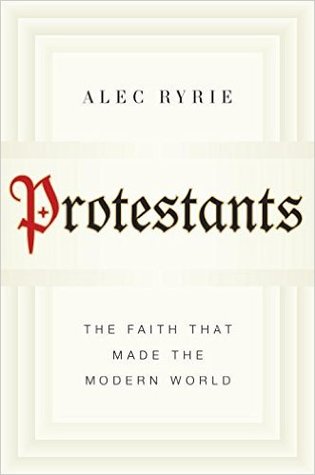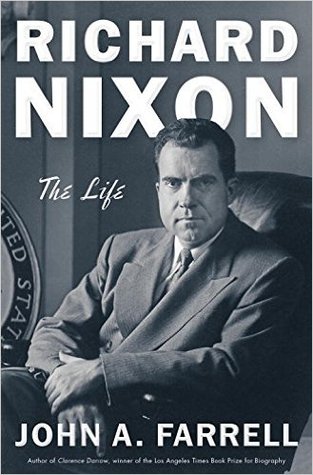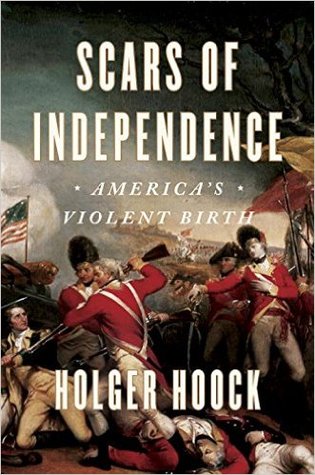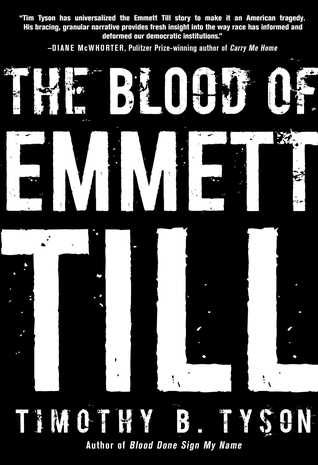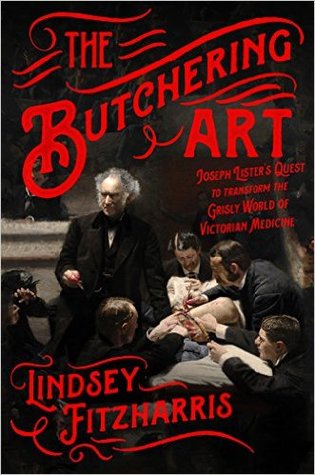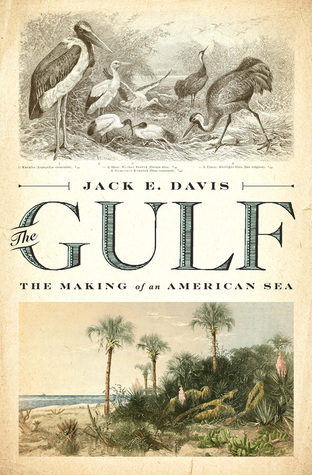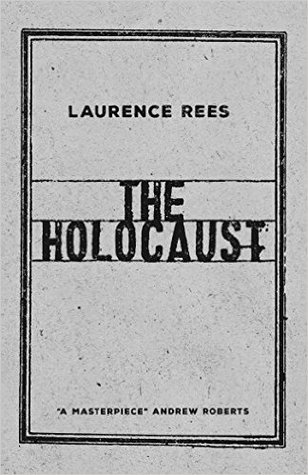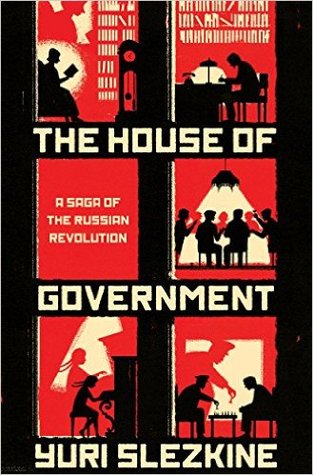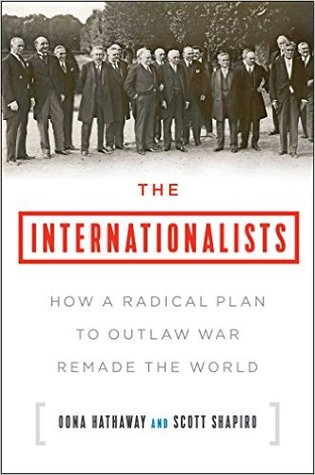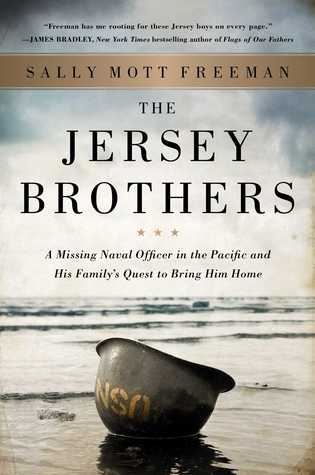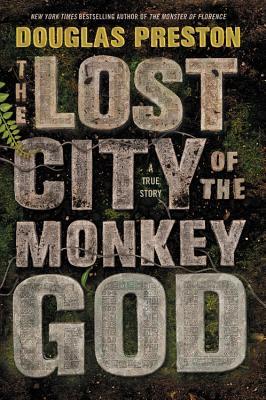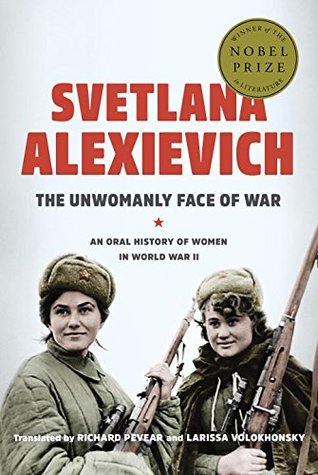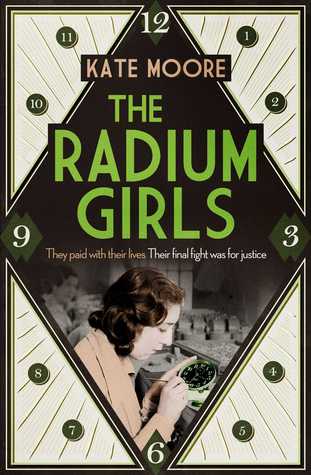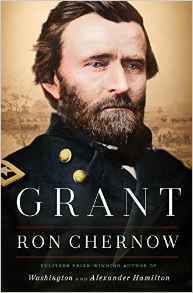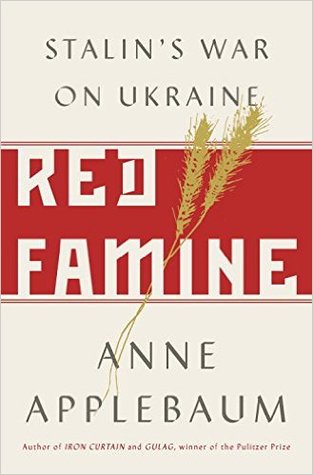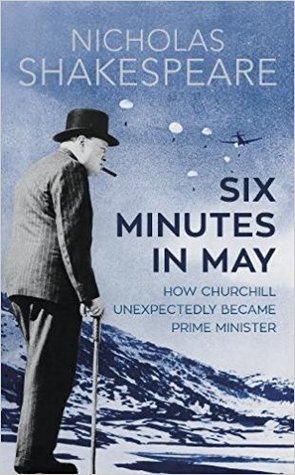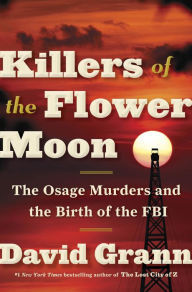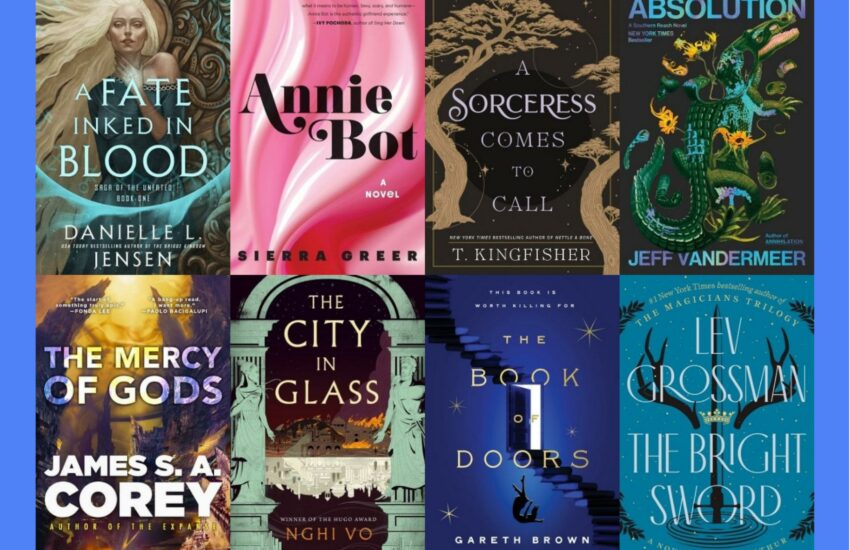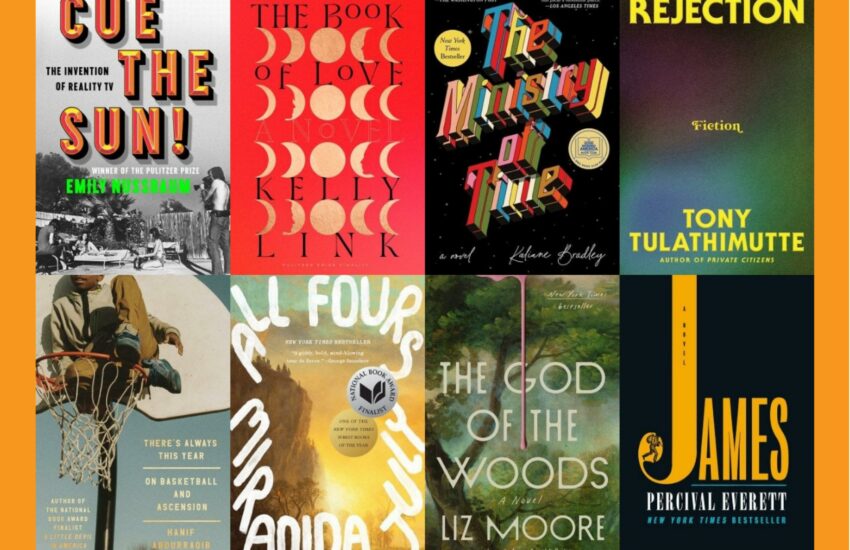The Best History Books of 2017 (A Year-End List Aggregation)
“What are the best History books of 2017?” We aggregated 14 year-end lists and ranked the 186 unique titles by how many times they appeared in an attempt to answer that very question!
There are thousands of year-end lists released every year and like we do in our weekly Best Book articles, we wanted to see which books appear the most. The top 28 books, all of which appeared on 2 or more best History lists, are ranked below with images, summaries, and links for more information or to purchase. The remaining 150+ books, as well as the top book lists, are at the bottom of the page.
Make sure to take a look at our other Best of 2017 book lists:
- The Best Fiction Books of 2017
- The Best Nonfiction Books of 2017
- The Best Science Fiction & Fantasy Books of 2017
- The Best Science & Nature Books of 2017
- The Best Cookbooks of 2017
- The Best Graphic Novels & Comics Books of 2017
- The Best Art & Photography & Coffee Table Books of 2017
- The Best Books All Categories of 2017
- The Best Biography & Memoir Books of 2017
- The Best Poetry Books of 2017
- The Best Children’s Books of 2017
- The Best Audiobooks of 2017
You can also take a look at our Best History books from last year as well as all the other Best 2016 articles!
Happy Scrolling!
Top 28 History Books Of 2017
28 .) Age Of Anger: A History Of the Present by Pankaj Mishra
Lists It Appears On:
- History Today
- NPR Books
“How can we explain the origins of the great wave of paranoid hatreds that seem inescapable in our close-knit world―from American shooters and ISIS to Donald Trump, from a rise in vengeful nationalism across the world to racism and misogyny on social media? In Age of Anger, Pankaj Mishra answers our bewilderment by casting his gaze back to the eighteenth century before leading us to the present.
He shows that as the world became modern, those who were unable to enjoy its promises―of freedom, stability, and prosperity―were increasingly susceptible to demagogues. The many who came late to this new world―or were left, or pushed, behind―reacted in horrifyingly similar ways: with intense hatred of invented enemies, attempts to re-create an imaginary golden age, and self-empowerment through spectacular violence. It was from among the ranks of the disaffected that the militants of the nineteenth century arose―angry young men who became cultural nationalists in Germany, messianic revolutionaries in Russia, bellicose chauvinists in Italy, and anarchist terrorists internationally.”
27 .) Ali: A Life by Jonathan Eig
Lists It Appears On:
- NPR Books
- Smithsonian
“He was the wittiest, the prettiest, the strongest, the bravest, and, of course, the greatest (as he told us himself). Muhammad Ali was one of the twentieth century’s most fantastic figures and arguably the most famous man on the planet.
But until now, he has never been the subject of a complete, unauthorized biography. Jonathan Eig, hailed by Ken Burns as one of America’s master storytellers, radically reshapes our understanding of the complicated man who was Ali. Eig had access to all the key people in Ali’s life, including his three surviving wives and his managers. He conducted more than 500 interviews and uncovered thousands of pages of previously unreleased FBI and Justice Department files, as well dozens of hours of newly discovered audiotaped interviews from the 1960s. Collectively, they tell Ali’s story like never before—the story of a man who was flawed and uncertain and brave beyond belief.”
26 .) Apollo 8: The Thrilling Story of the First Mission to the Moon by Jeffrey Kluger
Lists It Appears On:
- Amazon
- Goodreads
“In August 1968, NASA made a bold decision: in just sixteen weeks, the United States would launch humankind’s first flight to the moon. Only the year before, three astronauts had burned to death in their spacecraft, and since then the Apollo program had suffered one setback after another. Meanwhile, the Russians were winning the space race, the Cold War was getting hotter by the month, and President Kennedy’s promise to put a man on the moon by the end of the decade seemed sure to be broken. But when Frank Borman, Jim Lovell and Bill Anders were summoned to a secret meeting and told of the dangerous mission, they instantly signed on.
Written with all the color and verve of the best narrative non-fiction, Apollo 8 takes us from Mission Control to the astronaut’s homes, from the test labs to the launch pad. The race to prepare an untested rocket for an unprecedented journey paves the way for the hair-raising trip to the moon. Then, on Christmas Eve, a nation that has suffered a horrendous year of assassinations and war is heartened by an inspiring message from the trio of astronauts in lunar orbit. And when the mission is over―after the first view of the far side of the moon, the first earth-rise, and the first re-entry through the earth’s atmosphere following a flight to deep space―the impossible dream of walking on the moon suddenly seems within reach.”
25 .) Belonging: The Story of the Jews, 1492-1900 by Simon Schama
Lists It Appears On:
- The Economist
- The Guardian
“Simon Schama’s great project continues and the Jewish story is woven into the fabric of humanity. Their search for a home where a distinctive religion and culture could be nourished without being marginalized suddenly takes on startling resonance in our own epoch of homelessness, wanderings, persecutions, and anxious arrivals.
Volume 2 of The Story of the Jews epic tells the stories of many who seldom figure in Jewish histories: not just the rabbis and the philosophers but a poetess in the ghetto of Venice; a general in Ming China; a boxer in Georgian England, a Bible showman in Amsterdam; a teacher of the deaf in eighteenth-century France, an opera composer in nineteenth-century Germany. The story unfolds in Kerala and Mantua, the starlit hills of Galilee, the rivers of Colombia, the kitchens of Istanbul, the taverns of Ukraine and the mining camps of California. It sails in caravels, rides the stagecoaches and the railways, trudges the dawn streets of London with a pack load of old clothes, hobbles along with the remnant of Napoleon’s ruined army.”
24 .) Bunk: The Rise of Hoaxes, Humbug, Plagiarists, Phonies, Post-Facts, And Fake News by Kevin Young
Lists It Appears On:
- NPR Books
- Smithsonian
Award-winning poet and critic Kevin Young tours us through a rogue’s gallery of hoaxers, plagiarists, forgers, and fakers―from the humbug of P. T. Barnum and Edgar Allan Poe to the unrepentant bunk of JT LeRoy and Donald J. Trump. Bunk traces the history of the hoax as a peculiarly American phenomenon, examining what motivates hucksters and makes the rest of us so gullible. Disturbingly, Young finds that fakery is woven from stereotype and suspicion, race being the most insidious American hoax of all. He chronicles how Barnum came to fame by displaying figures like Joice Heth, a black woman whom he pretended was the 161-year-old nursemaid to George Washington, and What Is It?, an African American man Barnum professed was a newly discovered missing link in evolution.
23 .) Caught in the Revolution: Petrograd, Russia, 1917 – A World on the Edge by Helen Rappaport
Lists It Appears On:
- Barnes & Noble
- Stevereads
“Between the first revolution in February 1917 and Lenin’s Bolshevik coup in October, Petrograd (the former St Petersburg) was in turmoil – felt nowhere more keenly than on the fashionable Nevsky Prospekt. There, the foreign visitors who filled hotels, clubs, offices and embassies were acutely aware of the chaos breaking out on their doorsteps and beneath their windows.
Among this disparate group were journalists, diplomats, businessmen, bankers, governesses, volunteer nurses and expatriate socialites. Many kept diaries and wrote letters home: from an English nurse who had already survived the sinking of the Titanic; to the black valet of the US Ambassador, far from his native Deep South; to suffragette leader Emmeline Pankhurst, who had come to Petrograd to inspect the indomitable Women’s Death Battalion led by Maria Bochkareva.”
22 .) Edmund Burke and the Invention of Modern Conservatism by Emily Jones
Lists It Appears On:
- Financial Times
- History Today
Between 1830 and 1914 in Britain a dramatic modification of the reputation of Edmund Burke (1730-1797) occurred. Burke, an Irishman and Whig politician, is now most commonly known as the “founder of modern conservatism” – an intellectual tradition which is also deeply connected to the identity of the British Conservative Party. The idea of “Burkean conservatism”–a political philosophy which upholds “the authority of tradition,” the organic, historic conception of society, and the necessity of order, religion, and property–has been incredibly influential both in international academic analysis and in the wider political world. This is a highly significant intellectual construct, but its origins have not yet been understood. This volume demonstrates, for the first time, that the transformation of Burke into the “founder of conservatism” was in fact part of wider developments in British political, intellectual, and cultural history in the nineteenth and early twentieth centuries.
21 .) Greater Gotham: A History Of New York City From 1898 To 1919 by Mike Wallace
Lists It Appears On:
- Kirkus Review
- NPR Books
“In this utterly immersive volume, Mike Wallace captures the swings of prosperity and downturn, from the 1898 skyscraper-driven boom to the Bankers’ Panic of 1907, the labor upheaval, and violent repression during and after the First World War. Here is New York on a whole new scale, moving from national to global prominence — an urban dynamo driven by restless ambition, boundless energy, immigrant dreams, and Wall Street greed.
Within the first two decades of the twentieth century, a newly consolidated New York grew exponentially. The city exploded into the air, with skyscrapers jostling for prominence, and dove deep into the bedrock where massive underground networks of subways, water pipes, and electrical conduits sprawled beneath the city to serve a surging population of New Yorkers from all walks of life. New York was transformed in these two decades as the world’s second-largest city and now its financial capital, thriving and sustained by the city’s seemingly unlimited potential. “
20 .) Istanbul: A Tale of Three Cities by Bettany Hughes
Lists It Appears On:
- Noted
- Stevereads
“From the Koran to Shakespeare, this city with three names–Byzantium, Constantinople, Istanbul–resonates as an idea and a place, real and imagined. Standing as the gateway between East and West, North and South, it has been the capital city of the Roman, Byzantine, and Ottoman Empires. For much of its history it was the very center of the world, known simply as “”The City,”” but, as Bettany Hughes reveals, Istanbul is not just a city, but a global story.
In this epic new biography, Hughes takes us on a dazzling historical journey from the Neolithic to the present, through the many incarnations of one of the world’s greatest cities–exploring the ways that Istanbul’s influence has spun out to shape the wider world. Hughes investigates what it takes to make a city and tells the story not just of emperors, viziers, caliphs, and sultans, but of the poor and the voiceless, of the women and men whose aspirations and dreams have continuously reinvented Istanbul.”
19 .) Last Hope Island: Britain, Occupied Europe, and the Brotherhood That Helped Turn the Tide of War by Lynne Olson
Lists It Appears On:
- Barnes & Noble
- Noted
“When the Nazi blitzkrieg rolled over continental Europe in the early days of World War II, the city of London became a refuge for the governments and armed forces of six occupied nations who escaped there to continue the fight. So, too, did General Charles de Gaulle, the self-appointed representative of free France.
As the only European democracy still holding out against Hitler, Britain became known to occupied countries as “Last Hope Island.” Getting there, one young emigré declared, was “like getting to heaven.”
In this epic, character-driven narrative, acclaimed historian Lynne Olson takes us back to those perilous days when the British and their European guests joined forces to combat the mightiest military force in history. Here we meet the courageous King Haakon of Norway, whose distinctive “H7” monogram became a symbol of his country’s resistance to Nazi rule, and his fiery Dutch counterpart, Queen Wilhelmina, whose antifascist radio broadcasts rallied the spirits of her defeated people. Here, too, is the Earl of Suffolk, a swashbuckling British aristocrat whose rescue of two nuclear physicists from France helped make the Manhattan Project possible.”
18 .) Protestants: The Radicals Who Made the Modern World by Alec Ryrie
Lists It Appears On:
- Stevereads
- Waterstones
“Five hundred years ago a stubborn German monk challenged the Pope with a radical vision of what Christianity could be. The revolution he set in motion toppled governments, upended social norms and transformed millions of people’s understanding of their relationship with God. In this dazzling history, Alec Ryrie makes the case that we owe many of the rights and freedoms we have cause to take for granted–from free speech to limited government–to our Protestant roots.
Fired up by their faith, Protestants have embarked on courageous journeys into the unknown like many rebels and refugees who made their way to our shores. Protestants created America and defined its special brand of entrepreneurial diligence. Some turned to their bibles to justify bold acts of political opposition, others to spurn orthodoxies and insight on their God-given rights. Above all Protestants have fought for their beliefs, establishing a tradition of principled opposition and civil disobedience that is as alive today as it was 500 years ago. In this engrossing and magisterial work, Alec Ryrie makes the case that whether or not you are yourself a Protestant, you live in a world shaped by Protestants.”
17 .) Richard Nixon: The Life by John A. Farrell
Lists It Appears On:
- NPR Books
- Smithsonian
“At the end of WWII, navy lieutenant “Nick” Nixon returned from the Pacific and set his cap at Congress, an idealistic dreamer seeking to build a better world. Yet amid the turns of that now-legendary 1946 campaign, Nixon’s finer attributes gave way to unapologetic ruthlessness. The story of that transformation is the stunning overture to John A. Farrell’s magisterial biography of the president who came to embody postwar American resentment and division.
Within four years of his first victory, Nixon was a U.S. senator; in six, the vice president of the United States of America. “Few came so far, so fast, and so alone,” Farrell writes. Nixon’s sins as a candidate were legion; and in one unlawful secret plot, as Farrell reveals here, Nixon acted to prolong the Vietnam War for his own political purposes. Finally elected president in 1969, Nixon packed his staff with bright young men who devised forward-thinking reforms addressing health care, welfare, civil rights, and protection of the environment. It was a fine legacy, but Nixon cared little for it. He aspired to make his mark on the world stage instead, and his 1972 opening to China was the first great crack in the Cold War.”
16 .) Scars of Independence by Holger Hoock
Lists It Appears On:
- Kirkus Review
- Stevereads
“The American Revolution is often portrayed as an orderly, restrained rebellion, with brave patriots defending their noble ideals against an oppressive empire. It’s a stirring narrative, and one the founders did their best to encourage after the war. But as historian Holger Hoock shows in this deeply researched and elegantly written account of America’s founding, the Revolution was not only a high-minded battle over principles, but also a profoundly violent civil war—one that shaped the nation, and the British Empire, in ways we have only begun to understand.
In Scars of Independence, Hoock writes the violence back into the story of the Revolution. American Patriots persecuted and tortured Loyalists. British troops massacred enemy soldiers and raped colonial women. Prisoners were starved on disease-ridden ships and in subterranean cells. African-Americans fighting for or against independence suffered disproportionately, and Washington’s army waged a genocidal campaign against the Iroquois. In vivid, authoritative prose, Hoock’s new reckoning also examines the moral dilemmas posed by this all-pervasive violence, as the British found themselves torn between unlimited war and restraint toward fellow subjects, while the Patriots documented war crimes in an ingenious effort to unify the fledgling nation.”
15 .) The Blood of Emmett Till by Timothy B. Tyson
Lists It Appears On:
- Goodreads
- NPR Books
“This extraordinary New York Times bestseller reexamines a pivotal event of the civil rights movement—the 1955 lynching of Emmett Till—“and demands that we do the one vital thing we aren’t often enough asked to do with history: learn from it” (The Atlantic).
In 1955, white men in the Mississippi Delta lynched a fourteen-year-old from Chicago named Emmett Till. His murder was part of a wave of white terrorism in the wake of the 1954 Supreme Court decision that declared public school segregation unconstitutional. Only weeks later, Rosa Parks thought about young Emmett as she refused to move to the back of a city bus in Montgomery, Alabama. Five years later, Black students who called themselves “the Emmett Till generation” launched sit-in campaigns that turned the struggle for civil rights into a mass movement. Till’s lynching became the most notorious hate crime in American history.”
14 .) The Butchering Art: Joseph Lister’s Quest to Transform the Grisly World of Victorian Medicine by Lindsey Fitzharris
Lists It Appears On:
- NPR Books
- The Guardian
“In The Butchering Art, the historian Lindsey Fitzharris reveals the shocking world of nineteenth-century surgery on the eve of profound transformation. She conjures up early operating theaters―no place for the squeamish―and surgeons, working before anesthesia, who were lauded for their speed and brute strength. These medical pioneers knew that the aftermath of surgery was often more dangerous than their patients’ afflictions, and they were baffled by the persistent infections that kept mortality rates stubbornly high. At a time when surgery couldn’t have been more hazardous, an unlikely figure stepped forward: a young, melancholy Quaker surgeon named Joseph Lister, who would solve the deadly riddle and change the course of history.
Fitzharris dramatically recounts Lister’s discoveries in gripping detail, culminating in his audacious claim that germs were the source of all infection―and could be countered by antiseptics. Focusing on the tumultuous period from 1850 to 1875, she introduces us to Lister and his contemporaries―some of them brilliant, some outright criminal―and takes us through the grimy medical schools and dreary hospitals where they learned their art, the deadhouses where they studied anatomy, and the graveyards they occasionally ransacked for cadavers.”
13 .) The Gulf: The Making of An American Sea by Jack E. Davis
Lists It Appears On:
- Kirkus Review
- NPR Books
“When painter Winslow Homer first sailed into the Gulf of Mexico, he was struck by its “”special kind of providence.”” Indeed, the Gulf presented itself as America’s sea―bound by geography, culture, and tradition to the national experience―and yet, there has never been a comprehensive history of the Gulf until now. And so, in this rich and original work that explores the Gulf through our human connection with the sea, environmental historian Jack E. Davis finally places this exceptional region into the American mythos in a sweeping history that extends from the Pleistocene age to the twenty-first century.
Significant beyond tragic oil spills and hurricanes, the Gulf has historically been one of the world’s most bounteous marine environments, supporting human life for millennia. Davis starts from the premise that nature lies at the center of human existence, and takes readers on a compelling and, at times, wrenching journey from the Florida Keys to the Texas Rio Grande, along marshy shorelines and majestic estuarine bays, profoundly beautiful and life-giving, though fated to exploitation by esurient oil men and real-estate developers.
Rich in vivid, previously untold stories, The Gulf tells the larger narrative of the American Sea―from the sportfish that brought the earliest tourists to Gulf shores to Hollywood’s engagement with the first offshore oil wells―as it inspired and empowered, sometimes to its own detriment, the ethnically diverse groups of a growing nation. Davis’ pageant of historical characters is vast, including: the presidents who directed western expansion toward its shores, the New England fishers who introduced their own distinct skills to the region, and the industries and big agriculture that sent their contamination downstream into the estuarine wonderland. Nor does Davis neglect the colorfully idiosyncratic individuals: the Tabasco king who devoted his life to wildlife conservation, the Texas shrimper who gave hers to clean water and public health, as well as the New York architect who hooked the “big one” that set the sportfishing world on fire.”
12 .) The Holocaust, A New History by Laurence Rees
Lists It Appears On:
- The Guardian
- Noted
Laurence Rees has spent twenty-five years meeting the survivors and perpetrators of the Third Reich and the Holocaust. In this sweeping history, he combines this testimony with the latest academic research to investigate how history’s greatest crime was possible. Rees argues that while hatred of the Jews was at the epicenter of Nazi thinking, we cannot fully understand the Holocaust without considering Nazi plans to kill millions of non-Jews as well. He also reveals that there was no single overarching blueprint for the Holocaust. Instead, a series of escalations compounded into the horror. Though Hitler was most responsible for what happened, the blame is widespread, Rees reminds us, and the effects are enduring.
11 .) The House of Government: A Saga of the Russian Revolution by Yuri Slezkine
Lists It Appears On:
- Stevereads
- The Economist
“The House of Government is unlike any other book about the Russian Revolution and the Soviet experiment. Written in the tradition of Tolstoy’s War and Peace, Grossman’s Life and Fate, and Solzhenitsyn’s The Gulag Archipelago, Yuri Slezkine’s gripping narrative tells the true story of the residents of an enormous Moscow apartment building where top Communist officials and their families lived before they were destroyed in Stalin’s purges. A vivid account of the personal and public lives of Bolshevik true believers, the book begins with their conversion to Communism and ends with their children’s loss of faith and the fall of the Soviet Union.
Completed in 1931, the House of Government, later known as the House on the Embankment, was located across the Moscow River from the Kremlin. The largest residential building in Europe, it combined 505 furnished apartments with public spaces that included everything from a movie theater and a library to a tennis court and a shooting range. Slezkine tells the chilling story of how the building’s residents lived in their apartments and ruled the Soviet state until some eight hundred of them were evicted from the House and led, one by one, to prison or their deaths.”
10 .) The Internationalists: How a Radical Plan to Outlaw War Remade the World by Oona Hathaway and Scott Shapiro
Lists It Appears On:
- Noted
- The Economist
“A bold and provocative history of the men who fought to outlaw war and how an often overlooked treaty signed in 1928 was among the most transformative events in modern history.
On a hot summer afternoon in 1928, the leaders of the world assembled in Paris to outlaw war. Within the year, the treaty signed that day, known as the Peace Pact, had been ratified by nearly every state in the world. War, for the first time in history, had become illegal the world over. But the promise of that summer day was fleeting. Within a decade of its signing, each state that had gathered in Paris to renounce war was at war. And in the century that followed, the Peace Pact was dismissed as an act of folly and an unmistakable failure. This book argues that that understanding is inaccurate, and that the Peace Pact ushered in a sustained march toward peace that lasts to this day.
The Internationalists tells the story of the Peace Pact by placing it in the long history of international law from the seventeenth century through the present, tracing this rich history through a fascinating and diverse array of lawyers, politicians and intellectuals—Hugo Grotius, Nishi Amane, Salmon Levinson, James Shotwell, Sumner Welles, Carl Schmitt, Hersch Lauterpacht, and Sayyid Qutb. It tells of a centuries-long struggle of ideas over the role of war in a just world order. It details the brutal world of conflict the Peace Pact helped extinguish, and the subsequent era where tariffs and sanctions take the place of tanks and gunships.”
9 .) The Jersey Brothers: A Missing Naval Officer in the Pacific and His Family’s Quest to Bring Him Home by Sally Mott Freeman
Lists It Appears On:
- Amazon
- Smithsonian
“The extraordinary, real-life adventure of three brothers at the center of the most dramatic turning points of World War II and their mad race to change history—and save one of their own.
They are three brothers, all Navy men, who end up coincidentally and extraordinarily at the epicenter of three of the war’s most crucial moments. Bill is picked by Roosevelt to run his first Map Room in Washington. Benny is the gunnery and anti-aircraft officer on the USS Enterprise, one of the only carriers to escape Pearl Harbor and by the end of 1942 the last one left in the Pacific to defend against the Japanese. Barton, the youngest and least distinguished of the three, is shuffled off to the Navy Supply Corps because his mother wants him out of harm’s way. But this protection plan backfires when Barton is sent to the Philippines and listed as missing-in-action after a Japanese attack. Now it is up to Bill and Benny to find and rescue him.”
8 .) The Lost City of the Monkey God: A True Story by Douglas Preston
Lists It Appears On:
- Amazon
- Barnes & Noble
“Since the days of conquistador Hernán Cortés, rumors have circulated about a lost city of immense wealth hidden somewhere in the Honduran interior, called the White City or the Lost City of the Monkey God. Indigenous tribes speak of ancestors who fled there to escape the Spanish invaders, and they warn that anyone who enters this sacred city will fall ill and die. In 1940, swashbuckling journalist Theodore Morde returned from the rainforest with hundreds of artifacts and an electrifying story of having found the Lost City of the Monkey God-but then committed suicide without revealing its location.
Three quarters of a century later, bestselling author Doug Preston joined a team of scientists on a groundbreaking new quest. In 2012 he climbed aboard a rickety, single-engine plane carrying the machine that would change everything: lidar, a highly advanced, classified technology that could map the terrain under the densest rainforest canopy. In an unexplored valley ringed by steep mountains, that flight revealed the unmistakable image of a sprawling metropolis, tantalizing evidence of not just an undiscovered city but an enigmatic, lost civilization.
“
7 .) The Unwomanly Face Of War: An Oral History Of Women In World War II by Svetlana Alexievich
Lists It Appears On:
- NPR Books
- The Economist
“For more than three decades, Svetlana Alexievich has been the memory and conscience of the twentieth century. When the Swedish Academy awarded her the Nobel Prize, it cited her invention of “a new kind of literary genre,” describing her work as “a history of emotions . . . a history of the soul.”
In The Unwomanly Face of War, Alexievich chronicles the experiences of the Soviet women who fought on the front lines, on the home front, and in the occupied territories. These women—more than a million in total—were nurses and doctors, pilots, tank drivers, machine-gunners, and snipers. They battled alongside men, and yet, after the victory, their efforts and sacrifices were forgotten.
Alexievich traveled thousands of miles and visited more than a hundred towns to record these women’s stories. Together, this symphony of voices reveals a different aspect of the war—the everyday details of life in combat left out of the official histories.”
6 .) Hue 1968: A Turning Point of the American War in Vietnam by Mark Bowden
Lists It Appears On:
- Amazon
- Barnes & Noble
- Kirkus Review
In the early hours of January 31, 1968, the North Vietnamese launched over one hundred attacks across South Vietnam in what would become known as the Tet Offensive. The lynchpin of Tet was the capture of Hue, Vietnam?s intellectual and cultural capital, by 10,000 National Liberation Front troops who descended from hidden camps and surged across the city of 140,000. Within hours the entire city was in their hands save for two small military outposts. American commanders refused to believe the size and scope of the Front?s presence, ordering small companies of marines against thousands of entrenched enemy troops. After several futile and deadly days, Lieutenant Colonel Ernie Cheatham would finally come up with a strategy to retake the city, block by block and building by building, in some of the most intense urban combat since World War II.
5 .) The Radium Girls: The Dark Story of America’s Shining Women by Kate Moore
Lists It Appears On:
- Barnes & Noble
- Goodreads
- NPR Books
“The Curies’ newly discovered element of radium makes gleaming headlines across the nation as the fresh face of beauty, and wonder drug of the medical community. From body lotion to tonic water, the popular new element shines bright in the otherwise dark years of the First World War.
Meanwhile, hundreds of girls toil amidst the glowing dust of the radium-dial factories. The glittering chemical covers their bodies from head to toe; they light up the night like industrious fireflies. With such a coveted job, these “”shining girls”” are the luckiest alive ― until they begin to fall mysteriously ill.
But the factories that once offered golden opportunities are now ignoring all claims of the gruesome side effects, and the women’s cries of corruption. And as the fatal poison of the radium takes hold, the brave shining girls find themselves embroiled in one of the biggest scandals of America’s early 20th century, and in a groundbreaking battle for workers’ rights that will echo for centuries to come.”
4 .) Grant by Ron Chernow
Lists It Appears On:
- Amazon
- Barnes & Noble
- Goodreads
- Smithsonian
“Ulysses S. Grant’s life has typically been misunderstood. All too often he is caricatured as a chronic loser and an inept businessman, or as the triumphant but brutal Union general of the Civil War. But these stereotypes don’t come close to capturing him, as Chernow shows in his masterful biography, the first to provide a complete understanding of the general and president whose fortunes rose and fell with dizzying speed and frequency.
Before the Civil War, Grant was flailing. His business ventures had ended dismally, and despite distinguished service in the Mexican War he ended up resigning from the army in disgrace amid recurring accusations of drunkenness. But in war, Grant began to realize his remarkable potential, soaring through the ranks of the Union army, prevailing at the battle of Shiloh and in the Vicksburg campaign, and ultimately defeating the legendary Confederate general Robert E. Lee. Along the way, Grant endeared himself to President Lincoln and became his most trusted general and the strategic genius of the war effort. Grant’s military fame translated into a two-term presidency, but one plagued by corruption scandals involving his closest staff members.
More important, he sought freedom and justice for black Americans, working to crush the Ku Klux Klan and earning the admiration of Frederick Douglass, who called him “the vigilant, firm, impartial, and wise protector of my race.” After his presidency, he was again brought low by a dashing young swindler on Wall Street, only to resuscitate his image by working with Mark Twain to publish his memoirs, which are recognized as a masterpiece of the genre. “
3 .) Red Famine: Stalin’s War on Ukraine by Anne Applebaum
Lists It Appears On:
- Amazon
- Noted
- Stevereads
- The Economist
“In 1929 Stalin launched his policy of agricultural collectivization—in effect a second Russian revolution—which forced millions of peasants off their land and onto collective farms. The result was a catastrophic famine, the most lethal in European history. At least five million people died between 1931 and 1933 in the USSR. But instead of sending relief the Soviet state made use of the catastrophe to rid itself of a political problem. In Red Famine, Anne Applebaum argues that more than three million of those dead were Ukrainians who perished not because they were accidental victims of a bad policy but because the state deliberately set out to kill them.
Applebaum proves what has long been suspected: after a series of rebellions unsettled the province, Stalin set out to destroy the Ukrainian peasantry. The state sealed the republic’s borders and seized all available food. Starvation set in rapidly, and people ate anything: grass, tree bark, dogs, corpses. In some cases, they killed one another for food. Devastating and definitive, Red Famine captures the horror of ordinary people struggling to survive extraordinary evil.
“
2 .) Six Minutes in May: How Churchill Unexpectedly Became Prime Minister by Nicholas Shakespeare
Lists It Appears On:
- History Today
- Noted
- The Economist
- The Guardian
London, early May 1940: Britain is on the brink of war and Neville Chamberlain’s government is about to fall. It is hard for us to imagine the Second World War without Winston Churchill taking over at the helm, but in SIX MINUTES IN MAY Nicholas Shakespeare shows how easily events could have gone in a different direction.
1 .) Killers of the Flower Moon: The Osage Murders and the Birth of the FBI by David Grann
Lists It Appears On:
- Amazon
- Barnes & Noble
- Goodreads
- Kirkus Review
- Noted
- NPR Books
- Smithsonian
“In the 1920s, the richest people per capita in the world were members of the Osage Indian nation in Oklahoma. After oil was discovered beneath their land, they rode in chauffeured automobiles, built mansions, and sent their children to study in Europe.
Then, one by one, the Osage began to be killed off. The family of an Osage woman, Mollie Burkhart, became a prime target. Her relatives were shot and poisoned. And it was just the beginning, as more and more members of the tribe began to die under mysterious circumstances.
In this last remnant of the Wild West—where oilmen like J. P. Getty made their fortunes and where desperadoes like Al Spencer, the “Phantom Terror,” roamed—many of those who dared to investigate the killings were themselves murdered. As the death toll climbed to more than twenty-four, the FBI took up the case. It was one of the organization’s first major homicide investigations and the bureau badly bungled the case. In desperation, the young director, J. Edgar Hoover, turned to a former Texas Ranger named Tom White to unravel the mystery. White put together an undercover team, including one of the only American Indian agents in the bureau. The agents infiltrated the region, struggling to adopt the latest techniques of detection. Together with the Osage they began to expose one of the most chilling conspiracies in American history. “
The 150+ Additional Best History Books Of 2017
| # | Books | Author | Lists |
| (Titles Appear On 1 List Each) | |||
| 29 | A Brief History of Everyone Who Ever Lived: The Human Story Retold Through Our Genes | Adam Rutherford and Siddhartha Mukherjee | Amazon |
| 30 | A Column of Fire | Panmacmillan | |
| 31 | A History of Algeria | Financial Times | |
| 32 | A History of Modern Britain | Panmacmillan | |
| 33 | A Hope More Powerful Than the Sea: One Refugee’s Incredible Story of Love, Loss, and Survival | Melissa Fleming | Goodreads |
| 34 | Affluence Without Abundance: The Disappearing World Of The Bushmen | James Suzman | NPR Books |
| 35 | Against the Grain | James Scott | The Economist |
| 36 | Air Force Blue: The RAF in World War Two – Spearhead of Victory | Patrick Bishop | Waterstones |
| 37 | American Girls in Red Russia | Financial Times | |
| 38 | American Kingpin: The Epic Hunt for the Criminal Mastermind Behind the Silk Road | Nick Bilton | Amazon |
| 39 | An American Family: A Memoir of Hope and Sacrifice | Khizr Khan | Amazon |
| 40 | And Your Daughters Shall Prophesy: Stories From The Byways Of American Women And Religion | Adrian Shirk | NPR Books |
| 41 | Anne Boleyn, A King’s Obsession: A Novel | Alison Weir | NPR Books |
| 42 | Arabia Felix: The Danish Expedition Of 1761-1767 | Thorkild Hansen, translated | NPR Books |
| 43 | Aurangseb | Financial Times | |
| 44 | Bellevue: Three Centuries Of Medicine And Mayhem At America’s Most Storied Hospital | David Oshinsky | NPR Books |
| 45 | BEYOND RESPECTABILITY: THE INTELLECTUAL THOUGHT OF RACE WOMEN | BRITTNEY COOPER | Bitch Media |
| 46 | Black and British | Panmacmillan | |
| 47 | Black Tudors | The Guardian | |
| 48 | Blitzed: Drugs in the Third Reich | Smithsonian | |
| 49 | Blue Sky White Stars | Sarvinder Naberhaus, illustrated | NPR Books |
| 50 | Bobby Kennedy: A Raging Spirit | Chris Matthews | Barnes & Noble |
| 51 | Brimstone | Cherie Priest | NPR Books |
| 52 | CHOCOLATE CITY: A HISTORY OF RACE AND DEMOCRACY IN THE NATION’S CAPITAL | Chris Myers Asch, George Derek Musgrove | Kirkus Review |
| 53 | Christian and Jewish Women in Britain, 1880-1914 | History Today | |
| 54 | Code Girls: The Untold Story of the American Women Code Breakers of World War II | Liza Mundy | Barnes & Noble |
| 55 | COLORED NO MORE: REINVENTING BLACK WOMANHOOD IN WASHINGTON, D.C. | TREVA B. LINDSEY | Bitch Media |
| 56 | Dadland | Keggie Carew | NPR Books |
| 57 | Dare Not Linger: The Presidential Years | Nelson Mandela and Mandla Langa | NPR Books |
| 58 | Days Without End: A Novel | Sebastian Barry | NPR Books |
| 59 | Divided We Stand: The Battle Over Women’s Rights and Family Values That Polarized American Politics | Smithsonian | |
| 60 | Dodge City: Wyatt Earp, Bat Masterson, and the Wickedest Town in the American West | Tom Clavin | Barnes & Noble |
| 61 | Dreaming The Beatles: The Love Story Of One Band And The Whole World | Rob Sheffield | NPR Books |
| 62 | Endurance: A Year in Space, A Lifetime of Discovery | Scott Kelly | Amazon |
| 63 | Enemies and Neighbours: Arabs and Jews in Palestine and Israel, 1917-2017 | Ian Black | The Economist |
| 64 | FEAR CITY: NEW YORK’S FISCAL CRISIS AND THE RISE OF AUSTERITY POLITICS | Kim Phillips-Fein | Kirkus Review |
| 65 | Fearless | Adam Claasen | Noted |
| 66 | Fiery & Furious People: A History of Violence in England | History Today | |
| 67 | Fire!!: The Zora Neale Hurston Story | Peter Bagge | NPR Books |
| 68 | Forgetfulness: Making the Modern Culture of Amnesia | History Today | |
| 69 | Franklin D. Roosevelt: A Political Life | Robert Dallek | NPR Books |
| 70 | GATEWAY TO EQUALITY: BLACK WOMEN AND THE STRUGGLE FOR ECONOMIC JUSTICE IN ST | KEONA K. ERVIN | Bitch Media |
| 71 | Gentlemanly Terrorists | History Today | |
| 72 | Ghosts of the Tsunami: Death and Life in Japan’s Disaster Zone | Richard Lloyd Parry | Amazon |
| 73 | Golden Hill: A Novel Of Old New York | Francis Spufford | NPR Books |
| 74 | Good Booty: Love And Sex, Black And White, Body And Soul In American Music | Ann Powers | NPR Books |
| 75 | Good-bye Maoriland: The Songs & Sounds of New Zealand’s Great War | Chris Bourke | Noted |
| 76 | Gorbachev: His Life And Times | William Taubman | NPR Books |
| 77 | HE CALLS ME BY LIGHTNING: THE LIFE OF CALIPH WASHINGTON AND THE FORGOTTEN SAGA OF JIM CROW, SOUTHERN JUSTICE, AND THE DEATH PENALTY | S. Jonathan Bass | Kirkus Review |
| 78 | History of the Crusades | History Today | |
| 79 | Homo Deus: A Brief History of Tomorrow | Yuval Noah Harari | Amazon |
| 80 | HOW WE GET FREE: BLACK FEMINISM & THE COMBAHEE RIVER COLLECTIVE | KEEANGA YAMAHTTA TAYLOR | Bitch Media |
| 81 | I Survived The American Revolution, 1776 | Lauren Tarshis | NPR Books |
| 82 | In the Name of the Family | History Today | |
| 83 | INCENDIARY: THE PSYCHIATRIST, THE MAD BOMBER, AND THE INVENTION OF CRIMINAL PROFILING | Michael Cannell | Kirkus Review |
| 84 | India After Gandhi | Panmacmillan | |
| 85 | Inglorious Empire: What the British Did to India | Shashi Tharoor | Noted |
| 86 | Inside Studio 54 | Mark Fleischman | NPR Books |
| 87 | Iran: A Modern History | Abbas Amanat | Stevereads |
| 88 | Irish Nationalist Women, 1900-1918 | History Today | |
| 89 | Isadora: A Novel | Amelia Gray | NPR Books |
| 90 | Jane Austen at Home | Lucy Worsley | Goodreads |
| 91 | JANE CROW: THE LIFE OF PAULI MURRAY | ROSALIND ROSENBERG | Bitch Media |
| 92 | Lady Killers: Deadly Women Throughout History | Tori Telfer | NPR Books |
| 93 | Leonardo da Vinci | Walter Isaacson | Amazon |
| 94 | Lincoln In The Bardo: A Novel | George Saunders | NPR Books |
| 95 | LOUISE THOMPSON PATTERSON: A LIFE OF STRUGGLE FOR JUSTICE | KEITH GILYARD | Bitch Media |
| 96 | Make Her Praises Heard Afar | Jane Tolerton | Noted |
| 97 | Martin Luther: The Man Who Rediscovered God and Changed the World | Eric Metaxas | Barnes & Noble |
| 98 | MEDICAL BONDAGE: RACE, GENDER, AND THE ORIGINS OF AMERICAN GYNECOLOGY | DEIRDRE COOPER OWENS | Bitch Media |
| 99 | Meet Me In The Bathroom: Rebirth And Rock And Roll In New York City 2001-2011 | Lizzy Goodman | NPR Books |
| 100 | Mozart’s Starling | Lyanda Lynn Haupt | NPR Books |
| 101 | Muddy: The Story Of Blues Legend Muddy Waters | Michael Mahin, illustrated | NPR Books |
| 102 | MY LAI: VIETNAM, 1968, AND THE DESCENT INTO DARKNESS | Howard Jones | Kirkus Review |
| 103 | My Life, My Love, My Legacy | Coretta Scott King, as told to Barbara Reynolds | NPR Books |
| 104 | On Tyranny: Twenty Lessons from the Twentieth Century | Timothy Snyder | Goodreads |
| 105 | One Hot Summer: Dickens, Darwin, Disraeli and the Great Stink of 1858 | History Today | |
| 106 | One Long Night: A Global History of Concentration Camps | Smithsonian | |
| 107 | One, Two, Three, More | Helen Levitt | NPR Books |
| 108 | Outlandish Knight: The Byzantine Life of Steven Runciman | History Today | |
| 109 | Pale Rider: The Spanish Flu of 1918 and How It Changed the World | Laura Spinney | Noted |
| 110 | Priests of Nature | Financial Times | |
| 111 | Ranger Games: A Story of Soldiers, Family and an Inexplicable Crime | Ben Blum | Amazon |
| 112 | REMAKING BLACK POWER: HOW BLACK WOMEN TRANSFORMED AN ERA | ASHLEY D. FARMER | Bitch Media |
| 113 | Run For It: Stories Of Slaves Who Fought For Their Freedom | Marcelo D’Salete | NPR Books |
| 114 | Sicily and the Enlightenment | History Today | |
| 115 | SONS AND SOLDIERS: THE UNTOLD STORY OF THE JEWS WHO ESCAPED THE NAZIS AND RETURNED WITH THE U.S. ARMY TO FIGHT HITLER | Bruce Henderson | Kirkus Review |
| 116 | Stalin: Waiting for Hitler | The Guardian | |
| 117 | Stanton: Lincoln’s War Secretary | Walter Stahr | NPR Books |
| 118 | Sticky Fingers: The Life and Times of Jann Wenner and Rolling Stone Magazine | Joe Hagan | Amazon |
| 119 | Story of the Jews: Belonging 1492-1900 | History Today | |
| 120 | Teenagers: The Rise of Youth Culture in New Zealand | Chris Brickell | Noted |
| 121 | Teeth: The Story Of Beauty, Inequality, And The Struggle For Oral Health In America | Mary Otto | NPR Books |
| 122 | Tenements, Towers and Trash: An Unconventional Illustrated History Of New York City | Julia Wertz | NPR Books |
| 123 | The 1929 Sino-Soviet War | Financial Times | |
| 124 | The Addis Ababa Massacre | Financial Times | |
| 125 | The Alice Network: A Novel | Kate Quinn | NPR Books |
| 126 | The Allure of Battle | Cathal Nolan | Stevereads |
| 127 | The American Spirit: Who We Are and What We Stand For | David McCullough | Barnes & Noble |
| 128 | The Apparitionists: A Tale of Phantoms, Fraud, Photography, And The Man Who Captured Lincoln’s Ghost | Peter Manseau | NPR Books |
| 129 | The Beautiful Country And The Middle Kingdom: America And China, 1776 To The Present | John Pomfret | NPR Books |
| 130 | The Best Land Under Heaven | Michael Wallis | Stevereads |
| 131 | The Best We Could Do: An Illustrated Memoir | Thi Bui | NPR Books |
| 132 | The Bettencourt Affair: The World’s Richest Woman And The Scandal That Rocked Paris | Tom Sancton | NPR Books |
| 133 | THE BLACK HAND: THE EPIC WAR BETWEEN A BRILLIANT DETECTIVE AND THE DEADLIEST SECRET SOCIETY IN AMERICAN HISTORY | Stephan Talty | Kirkus Review |
| 134 | The Burning Time | Panmacmillan | |
| 135 | The Children of Jocasta | Panmacmillan | |
| 136 | The Cold War | Financial Times | |
| 137 | The Color Of Law: A Forgotten History Of How Our Government Segregated America | Richard Rothstein | NPR Books |
| 138 | The Confessions of Young Nero | Panmacmillan | |
| 139 | The Conqueror’s Queen | Panmacmillan | |
| 140 | The Cooking Gene: A Journey Through African American Culinary History In The Old South | Michael W. Twitty | NPR Books |
| 141 | The Darkening Age | Panmacmillan | |
| 142 | THE EXPANDING BLAZE: HOW THE AMERICAN REVOLUTION IGNITED THE WORLD, 1775-1848 | Jonathan Israel | Kirkus Review |
| 143 | The Future Is History: How Totalitarianism Reclaimed Russia | Masha Gessen | Barnes & Noble |
| 144 | The House of Truth | Brad Snyder | Stevereads |
| 145 | The Improbable War: China, the United States and the Logic of Great Power Conflict | History Today | |
| 146 | The Inkblots: Hermann Rorschach, His Iconic Test, And The Power Of Seeing | Damion Searls | NPR Books |
| 147 | The King’s Assassin | Panmacmillan | |
| 148 | The Last Castle: The Epic Story of Love, Loss, and American Royalty in the Nation’s Largest Home | Denise Kiernan | Barnes & Noble |
| 149 | The Last of the Tsars | Panmacmillan | |
| 150 | The Many Deaths of Jew Suss | Financial Times | |
| 151 | The Odyssey of Echo Company: The 1968 Tet Offensive and the Epic Battle to Survive the Vietnam War | Doug Stanton | Barnes & Noble |
| 152 | The Popes and Britain | History Today | |
| 153 | The Portable Nineteenth-Century African American Women Writers | Hollis Robbins and Henry Louis Gates Jr. (editors) | NPR Books |
| 154 | The Potlikker Papers: A Food History Of The Modern South | John T. Edge | NPR Books |
| 155 | THE PROMISE OF PATRIARCHY: WOMEN AND THE NATION OF ISLAM | ULA YVETTE TAYLOR | Bitch Media |
| 156 | The Reason of State | History Today | |
| 157 | The Republic for Which It Stands | Financial Times | |
| 158 | The Retreat of Western Liberalism | Edward Luce | Amazon |
| 159 | The Road to Jonestown: Jim Jones and Peoples Temple | Jeff Guinn | Amazon |
| 160 | The Scent Of Jasmine: Coming Of Age In Jerusalem And Damascus | Anan Ameri | NPR Books |
| 161 | The Secret Lives Of Color | Kassia St. Clair | NPR Books |
| 162 | The Sioux Chef’s Indigenous Kitchen | Sean Sherman | NPR Books |
| 163 | The Storm Before The Storm: The Beginning Of The End Of The Roman Republic | Mike Duncan | NPR Books |
| 164 | The Templars: The Rise and Spectacular Fall of God’s Holy Warriors | Dan Jones | Barnes & Noble |
| 165 | THE THIN LIGHT OF FREEDOM: THE CIVIL WAR AND EMANCIPATION IN THE HEART OF AMERICA | Edward L. Ayers | Kirkus Review |
| 166 | The Third Reich in 100 Objects: A Material History of Nazi Germany | Roger Moorhouse | Waterstones |
| 167 | The Traitors | The Guardian | |
| 168 | The Trial of Adolf Hitler | Panmacmillan | |
| 169 | The Tyrant-Slayers of Ancient Athens: A Tale of Two Statues | History Today | |
| 170 | The Undoing Project: A Friendship That Changed Our Minds | Michael Lewis | Goodreads |
| 171 | The Woman Who Smashed Codes: A True Story Of Love, Spies, And The Unlikely Heroine Who Outwitted America’s Enemies | Jason Fagone | NPR Books |
| 172 | The Women Who Flew for Hitler | Panmacmillan | |
| 173 | The World Broke In Two: Virginia Woolf, T. S. Eliot, D. H. Lawrence, E. M. Forster, And The Year That Changed Literature | Bill Goldstein | NPR Books |
| 174 | The Year I Was Peter The Great: 1956 – Khrushchev, Stalin’s Ghost, and a Young American in Russia | Marvin Kalb | NPR Books |
| 175 | This Blessed Earth: A Year in the Life of an American Family Farm | Smithsonian | |
| 176 | Truevine | Panmacmillan | |
| 177 | Tuai: A Traveller in Two Worlds | Alison Jones and Kuni Kaa Jenkins | Noted |
| 178 | Unbelievable: My Front-Row Seat to the Craziest Campaign in American History | Katy Tur | Amazon |
| 179 | Victoria: The Queen: An Intimate Biography of the Woman Who Ruled an Empire | Julia Baird | Goodreads |
| 180 | Victorians Undone | The Guardian | |
| 181 | War in Val d’Orcia: An Italian War Diary 1943-1944 | Iris Origo | Waterstones |
| 182 | We Were Eight Years in Power: An American Tragedy | Ta-Nehisi Coates | Amazon |
| 183 | What She Ate: Six Remarkable Women And The Food That Tells Their Stories | Laura Shapiro | NPR Books |
| 184 | White Trash: The 400-Year Untold History of Class in America | Nancy Isenberg | Noted |
| 185 | Why We Sleep: Unlocking The Power Of Sleep And Dreams | Matthew Walker | NPR Books |
| 186 | Yardwork: A Biography of an Urban Place | History Today | |
14 Best History Book Sources/Lists Of 2017
| Source | Article |
| Amazon | Best history books of 2017 |
| Barnes & Noble | The Best Books of 2017 |
| Financial Times | Best books of 2017: History |
| Goodreads | Best History & Biography |
| History Today | The Best History Books 2017 |
| Kirkus Review | Best American History Books of 2017 |
| Noted | The 100 Best Books of 2017 |
| NPR Books | NPR’s Book Concierge Our Guide To 2017’s Great Reads |
| Panmacmillan | The best history books of 2017 |
| Smithsonian | The Ten Best History Books of 2017 |
| Stevereads | The Best Books of 2017: History! |
| The Economist | Books of the Year 2017 |
| The Guardian | Anthony Sattin’s best history books of 2017 |
| Waterstones | Patrick Bishop Recommends the Best History Books of the Year |
